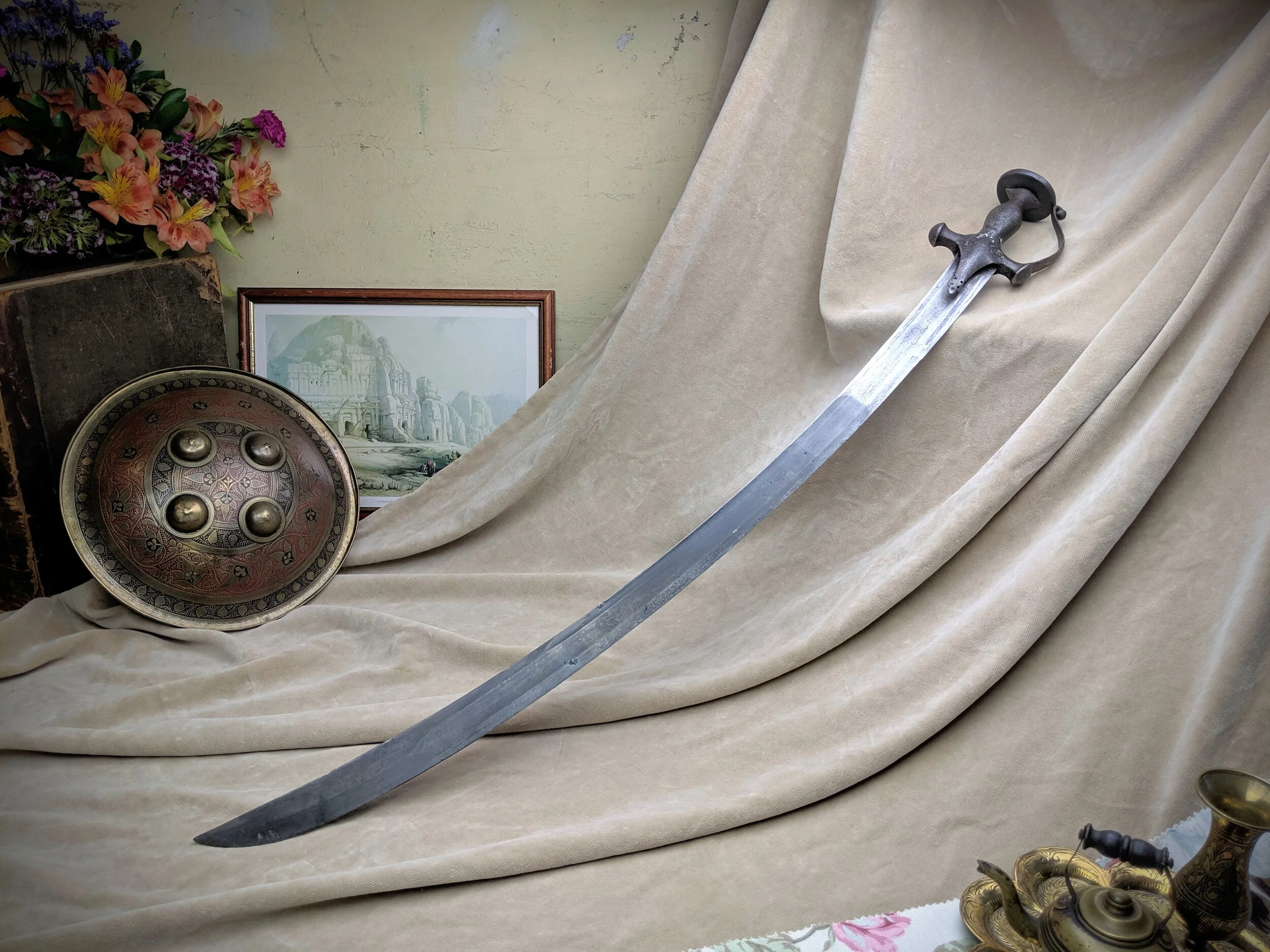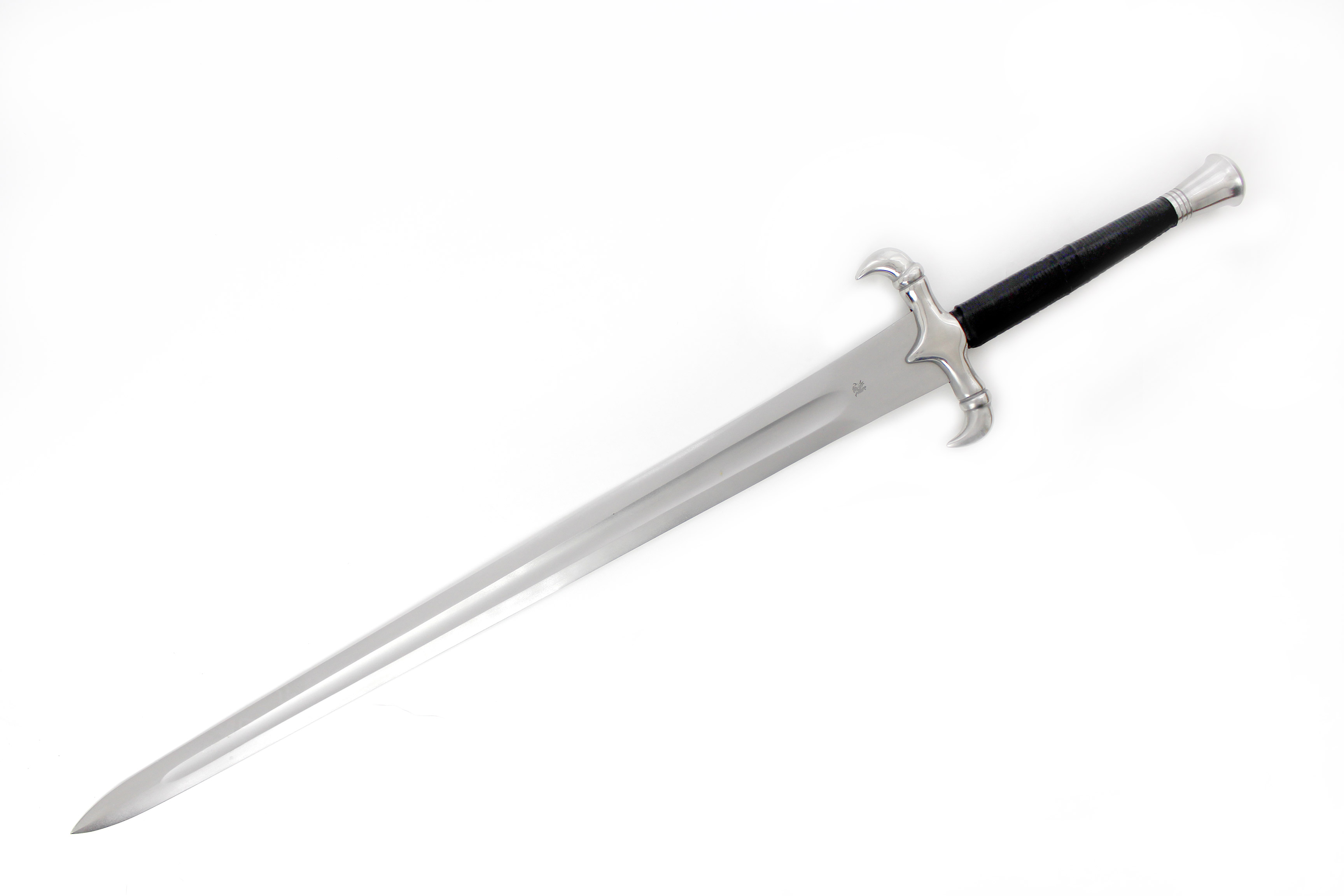Definition and Etymology: Sword Definition

Sword definition – The word “sword” has a long and complex history, with its origins dating back to the Bronze Age. It is a versatile term that has been used to describe a wide range of bladed weapons throughout history, from the short, single-edged swords of ancient Greece to the long, two-handed swords of medieval Europe. In its most general sense, a sword can be defined as any weapon that consists of a long, straight blade that is sharpened on one or both edges. However, the specific meaning of the word “sword” can vary depending on the context in which it is used.
A sword is a bladed weapon that has been used throughout history for both combat and self-defense. Swords come in many different shapes and sizes, and can be made from a variety of materials. One of the most common types of swords is the double-edged sword, which has a blade that is sharpened on both sides.
Double-edged swords are often used for cutting and thrusting, and can be very effective in close combat. However, they are also more difficult to control than single-edged swords, and require more skill to use effectively. Sword pits were used to collect swords that were no longer in use, and they can be a valuable source of information about the history of swords and swordsmanship.
The etymology of the word “sword” is somewhat uncertain, but it is thought to be derived from the Proto-Indo-European root *swer-, which means “to cut” or “to pierce.” This root is also found in the words “shear” and “scythe,” which are both bladed tools that are used for cutting. The word “sword” first appears in English in the early 12th century, and it has been used to describe a wide range of weapons throughout history. In addition to its literal meaning, the word “sword” has also been used figuratively to represent power, justice, and courage.
Examples of Sword Usage in Literature
The word “sword” has been used in literature for centuries to evoke a wide range of emotions and ideas. In Homer’s Iliad, the sword is a symbol of power and strength. In Shakespeare’s Hamlet, the sword is a symbol of justice and revenge. And in J.R.R. Tolkien’s The Lord of the Rings, the sword is a symbol of hope and courage.
A sword, a weapon of steel, its sharp edge could cleave through flesh and bone. In a world of conflict, it was a symbol of power and protection. Yet, there was a place where swords were useless, an umbrella pit , a watery abyss where metal rusted and sank beneath the waves.
In this realm, the sword’s power was nullified, its sharpness rendered meaningless.
Types and Classifications

Swords have been crafted in various forms throughout history, each with its unique design, size, and intended purpose. The classification of swords can be complex, with different systems used by historians, collectors, and martial artists.
One common classification system divides swords into two broad categories: single-edged and double-edged. Single-edged swords, such as the saber or machete, have a sharp edge on one side and a blunt or rounded edge on the other. Double-edged swords, like the rapier or katana, have sharp edges on both sides, allowing for more versatile cutting and thrusting techniques.
Size and Design, Sword definition
Swords also vary greatly in size, from the short and agile dagger to the imposing two-handed claymore. The size and weight of a sword influence its handling characteristics and combat effectiveness. Smaller swords are generally more maneuverable and suitable for close-quarters combat, while larger swords offer greater reach and power.
Purpose and Usage
The purpose of a sword can also dictate its design and classification. Swords designed for combat, such as the longsword or broadsword, typically feature robust construction and a balance between cutting and thrusting capabilities. Ceremonial swords, on the other hand, may prioritize aesthetics and symbolism over functionality.
Famous Swords
Throughout history and popular culture, certain swords have achieved legendary status. The Excalibur of Arthurian legend, for example, is a mythical sword said to possess magical powers. The katana, a traditional Japanese sword, is renowned for its sharpness and craftsmanship. And the lightsaber, a fictional weapon from the Star Wars franchise, has become an iconic symbol of science fiction.
Cultural Significance and Symbolism
Throughout history, swords have held immense cultural significance, transcending their practical use as weapons. They have become potent symbols, deeply embedded in the fabric of human societies.
Swords have symbolized power and authority, wielded by kings, emperors, and military leaders. Their presence signified strength, dominance, and the ability to enforce justice. In many cultures, swords were adorned with intricate designs and precious metals, further enhancing their status as symbols of prestige and nobility.
Religious and Ceremonial Significance
Swords have played a vital role in religious rituals and ceremonies. In some cultures, they are seen as sacred objects, imbued with divine power. They are used in initiation rites, purification ceremonies, and as symbols of spiritual protection.
In Christianity, the sword is often associated with Saint Michael the Archangel, who is depicted as wielding a flaming sword to vanquish evil. In Islam, the sword is a symbol of justice and holy war, as it was used by the Prophet Muhammad and his followers.
Swords in Folklore and Legend
Swords have featured prominently in folklore and legends around the world. They are often depicted as magical objects, possessing supernatural powers or capable of granting wishes. The legendary Excalibur, wielded by King Arthur, is a prime example of a sword imbued with mystical qualities.
In Japanese folklore, the samurai sword is a symbol of honor and loyalty. It is said that a samurai’s sword was an extension of his soul, and it was treated with great reverence and care.
In the annals of weaponry, the sword reigns supreme, a symbol of both power and honor. Its blade, honed to a razor’s edge, could cleave through flesh and bone with ease. Yet, in the shadowy depths of a casino pit , the sword’s purpose transformed.
Here, amidst the whirring of roulette wheels and the clinking of chips, it became a mere prop, a token of luck or despair, as players wagered their fortunes on the whims of fate.
A sword, with its sharp edge and pointed tip, is a weapon designed for both offense and defense. In the shadowy realm of the “tomorrow pit,” where secrets are buried and the past collides with the present, the sword becomes a symbol of both hope and despair.
Yet, beyond the pit’s depths, the sword’s true nature remains unchanged: a tool of power and a reminder of the fragility of life.
A sword is a bladed weapon designed for cutting and thrusting. Swords have been used for centuries, and they have played a significant role in human history. In recent years, there has been a resurgence of interest in swords, thanks in part to the popularity of nyt mini.
These miniature swords are perfect for practicing swordsmanship, and they can also be used for self-defense. Swords are a fascinating and complex subject, and there is much to learn about them.